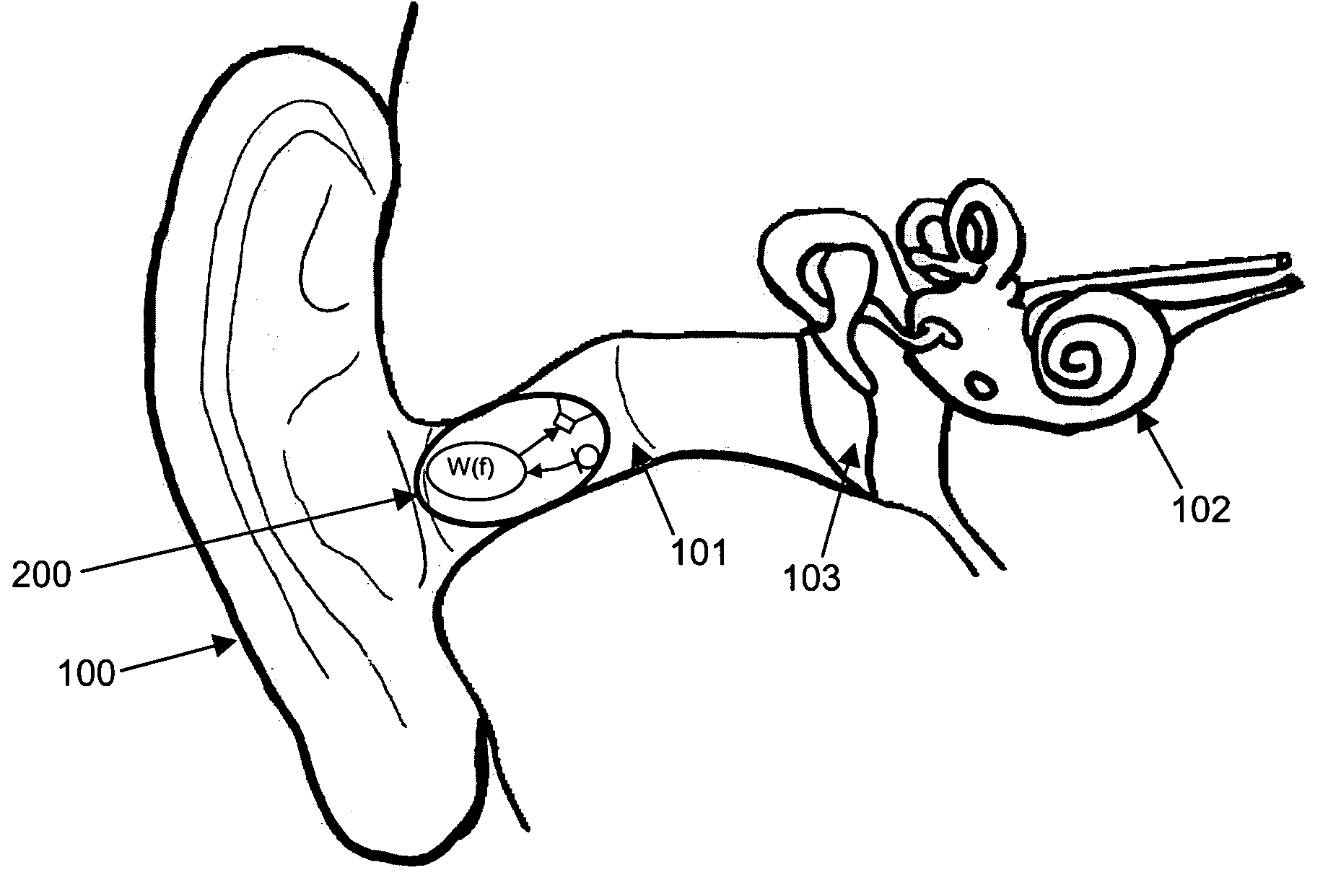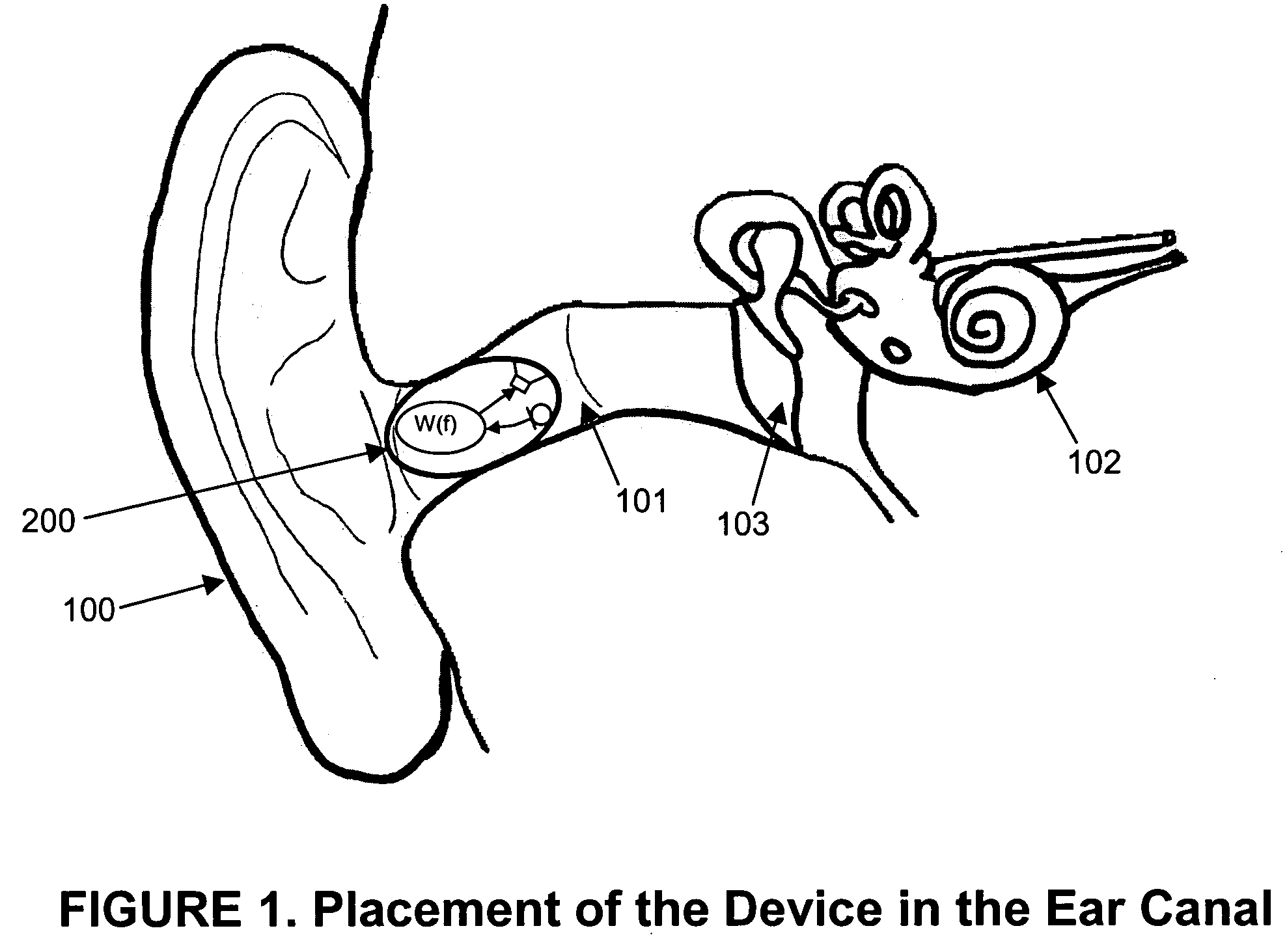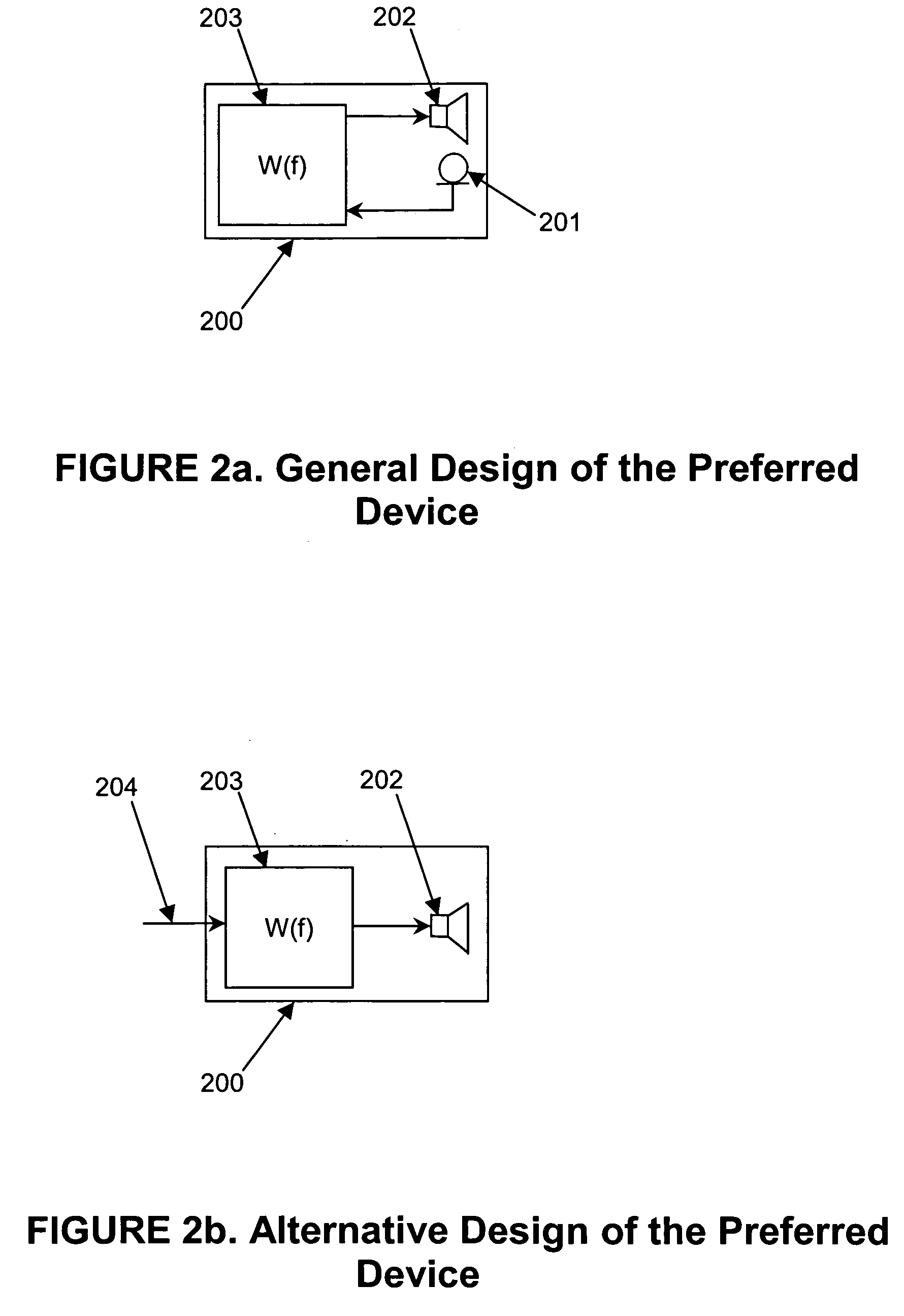Suppression of tinnitus
- Summary
- Abstract
- Description
- Claims
- Application Information
AI Technical Summary
Benefits of technology
Problems solved by technology
Method used
Image
Examples
Embodiment Construction
[0019] The present invention is a device directed to reducing sound heard or perceived by an individual suffering from tinnitus. The device is designed to fit within the ear canal, either in whole or in part, of the ear in which the tinnitus is heard or perceived.
[0020] The device of the present invention is capable of generating acoustic energy—both tonal and broadband—over a wide range of frequencies. Such acoustic energy is generated such that the real or perceived sound due to tinnitus may be suppressed.
[0021] The present invention utilizes at least one sensor, such as but not limited to a microphone, capable of measuring a signal correlated with the tinnitus either heard or perceived by the patient; at least one acoustic source, such as but not limited to at least one loud speaker; at least one control system along with necessary analog filtering and amplification components; and a source of power, such as but not limited to the use of at least one battery.
[0022] The indirec...
PUM
 Login to View More
Login to View More Abstract
Description
Claims
Application Information
 Login to View More
Login to View More - R&D
- Intellectual Property
- Life Sciences
- Materials
- Tech Scout
- Unparalleled Data Quality
- Higher Quality Content
- 60% Fewer Hallucinations
Browse by: Latest US Patents, China's latest patents, Technical Efficacy Thesaurus, Application Domain, Technology Topic, Popular Technical Reports.
© 2025 PatSnap. All rights reserved.Legal|Privacy policy|Modern Slavery Act Transparency Statement|Sitemap|About US| Contact US: help@patsnap.com



